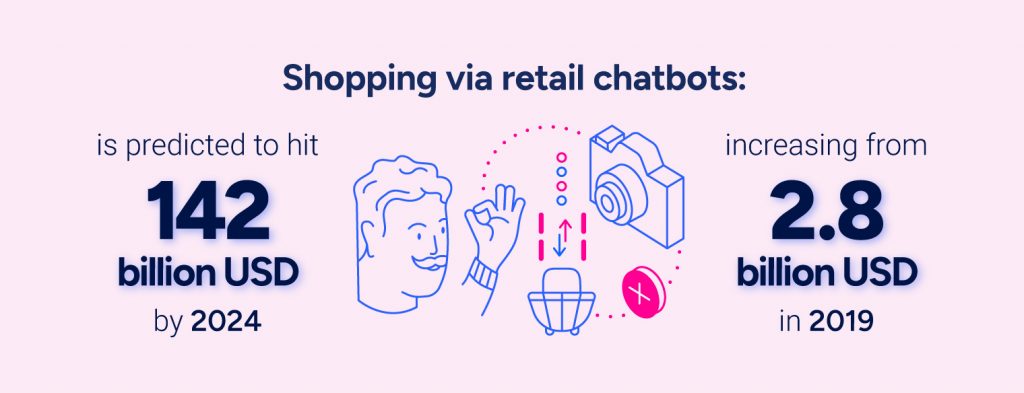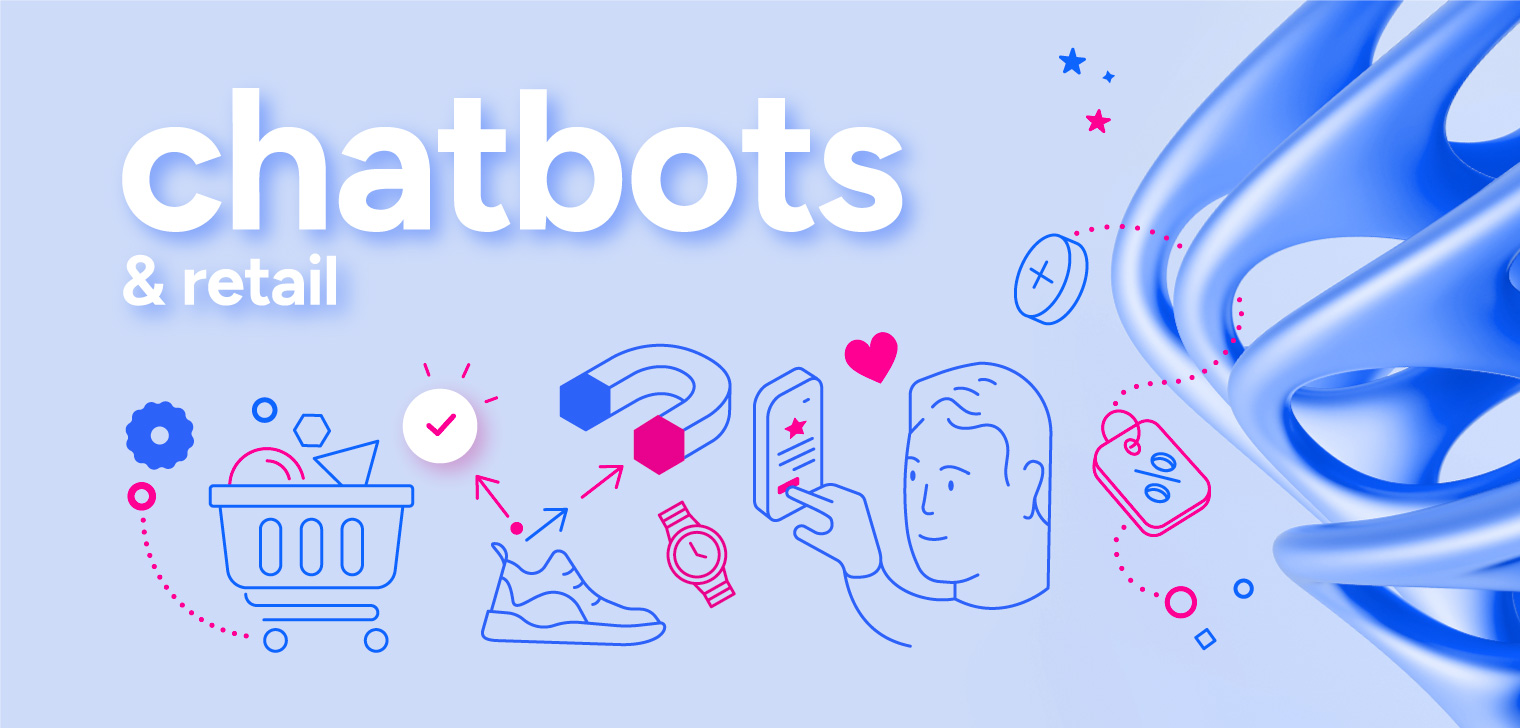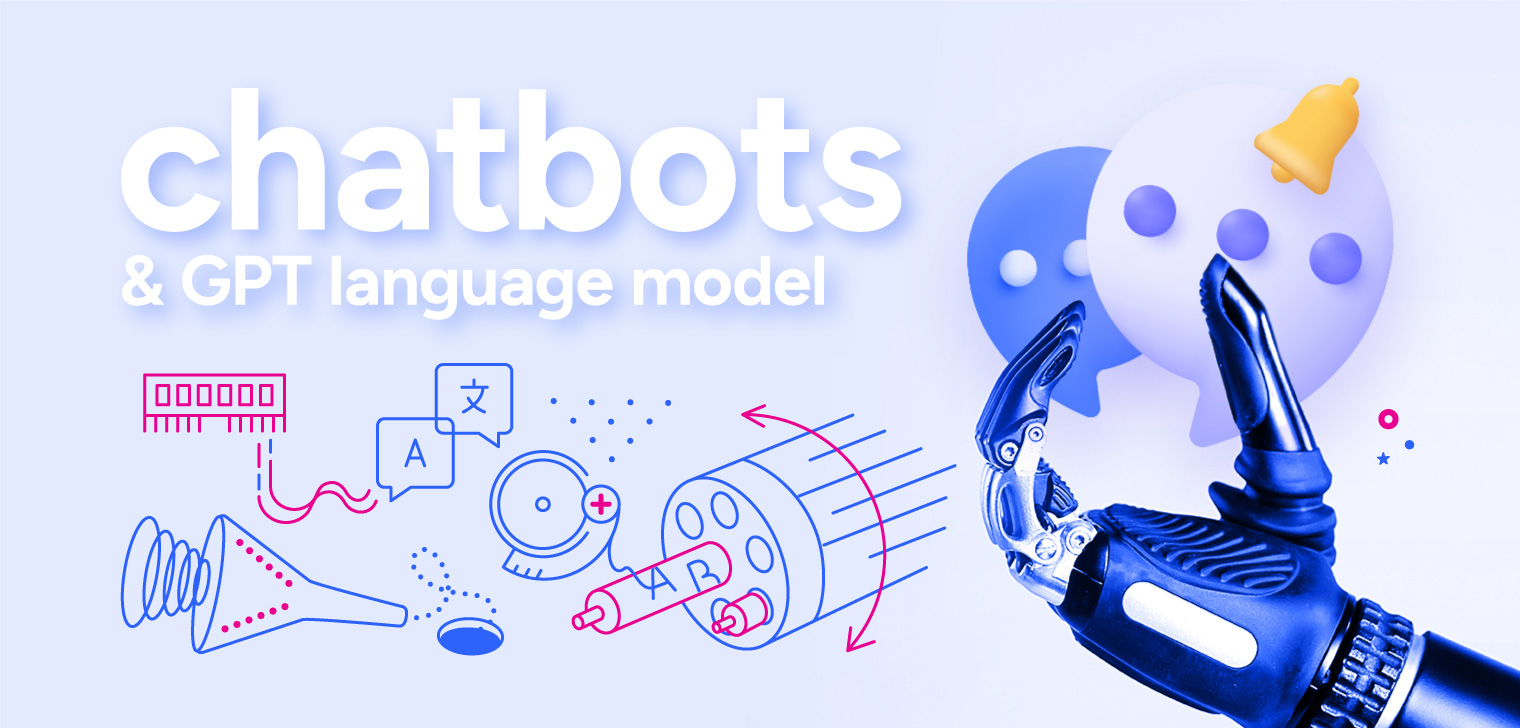Chatbots in retail – how to revolutionise customer service
In the ever-evolving retail landscape, staying ahead of the competition becomes necessary. The merchandising department, responsible for strategically placing products and promotions, is crucial in shaping the customer’s shopping experience. However, AI chatbots have emerged as game-changers in this digital era. These intelligent assistants not only increase sales but also elevate customer journeys. Let’s see how chatbots impact some of the industry leaders in retail.
What are chatbots in retail?
Chatbots in the retail sector are programmed to engage customers in natural language, providing assistance, recommendations, and support throughout their shopping journey. The aim is to create a seamless and personalised experience for each customer, ultimately driving sales and loyalty.
They can handle simple requests, like order tracking, FAQ answers, or product recommendations. Also, by automating these basic tasks, they free up human agents to handle higher-value engagements that require a personal conversation efficiently. Chatbots in retail also offer personalised customer service across all social media and web platforms.
The main benefits of chatbots in retail
Implementing chatbots in the retail industry yields many benefits, transforming how businesses interact with customers. Let’s focus on the advantages that chatbots can bring to brick-and-mortar stores.
Enhanced customer service
Chatbots provide instant, 24/7 support, answering customer queries and offering assistance, significantly improving the shopping experience. They can provide real-time assistance to customers within the store. They can answer questions about product locations, availability, and specifications, helping customers make informed purchase decisions.
Furthermore, chatbots efficiently address customer queries regarding product availability and sizes by swiftly checking in-store inventory, minimising the risk of disappointment due to out-of-stock items.
Personalisation
By analysing customer preferences and behaviours, chatbots can offer personalised product recommendations, promotions, and discounts, creating a tailored shopping experience. Like in online retail, chatbots in-store can analyse customer preferences and purchase history to offer personalised product recommendations. This personalisation adds a layer of customisation to the in-store experience.
Increased efficiency
Chatbots also play a crucial role in streamlining operational tasks like order tracking and inventory inquiries, freeing human employees to focus on more intricate and value-added responsibilities. They are invaluable in queue management, offering customers information about wait times and guiding them to available service points, which enhances the overall flow and minimises frustration.

They can provide store employees with rapid access to product details and inventory levels, boosting staff efficiency and elevating overall service quality. Also, they keep customers informed about ongoing promotions, discounts, and special offers within the store, fostering increased sales and heightened customer engagement through real-time information on available deals.
In-depth data collection and analysis
Finally, chatbots gather valuable customer data, enabling retailers to gain insights into consumer trends, preferences, and pain points, aiding in informed decision-making. Customers often seek additional information or reviews about products while browsing in-store. Chatbots can provide instant access to detailed product information, reviews, and comparisons, assisting customers in decision-making.
They can also collect customer feedback and conduct surveys about their in-store experience. This valuable data can help retailers make improvements and better understand customer preferences.
Chatbots in retail – a few use cases
By incorporating chatbots into the in-store environment, retailers can create a more interactive and customer-centric shopping experience. However, balancing automated assistance and human interaction is essential to ensure a seamless and personalised customer journey.
Leading retail brands have embraced the power of chatbots, leveraging customer satisfaction and operational efficiency. Let’s delve into some real-world examples.
Walmart
Walmart employs AI-powered shopping assistance to revolutionise the in-store shopping experience. This chatbot serves as a comprehensive guide for customers, aiding them in locating products within the store efficiently. Using advanced algorithms, the assistant helps customers find their desired items and suggests complementary products, contributing to a more personalised and curated shopping experience. By streamlining the search process and providing tailored recommendations, the AI-powered shopping assistant improves the overall customer experience and boosts sales by encouraging additional purchases.
Lidl
Lidl has introduced a custom-automated WhatsApp chatbot to help shoppers identify the quietest and most convenient times to visit their local stores. This innovative solution utilises real-time data and customer transaction numbers to determine the busiest and quietest hours of the day, enabling customers to plan their shopping trips more effectively.
Lidl claims that this functionality, developed with customised software, is the first for any Lidl store globally. The initiative complements Lidl’s previous launch of the Lidl Community Gift Card, a remote payment system catering to isolating or cocooning shoppers. These initiatives were a part of Lidl’s COVID-19 protective measures, following the social distancing signage, multiple sanitation stations, increased security, protective screens, and face shields for employees.
Biedronka
Biedronka, a prominent retail giant, has embraced retail chatbots to enhance customer interactions and streamline information dissemination. The company ensures that customers receive precise details regarding product availability, pricing, and ongoing promotions. The implementation of chatbots provides instant access to crucial information and fosters proactive engagement, strengthening the overall relationship between the retail giant and its customers. This seamless integration of technology bolsters customer satisfaction and plays a pivotal role in boosting sales by ensuring customers are well-informed about the latest products and promotions.
Sephora
Sephora, a leading beauty retailer, uses retail chatbots to elevate the customer experience. These in-store virtual assistants are pivotal in providing personalised beauty tips and tailored advice based on their unique preferences and needs.
Beyond general tips, the chatbots also deliver highly targeted product recommendations by analysing customer preferences and purchase history data. This approach enhances customer satisfaction and fosters a sense of individualised attention within the company’s extensive product range. The in-store chatbots help customers find specific items, navigate the extensive selection of beauty products, and stay informed about the latest trends.
Taco Bell
The fast-food retailer giant Taco Bell developed its own TacoBot via messaging platform Slack. TacoBot is an interactive ordering assistant that enables customers to place orders seamlessly with customised specifications.

Its user-friendly interface empowers customers to add or remove ingredients effortlessly, review prices, manage their cart, and efficiently complete the checkout process, all within the convenience of the app. TacoBot delivers a consistent and reliable experience to every customer during each interaction. The company’s chatbot demonstrates its technological prowess and enhances convenience and personalisation in fast-food ordering.
McDonald
McDonald’s, in collaboration with Google, developed an AI chatbot named “Ask Pickles” to assist restaurant workers with quick answers during their shifts, addressing queries such as cleaning an ice cream machine. The chatbot will be trained on various sources, including manuals and equipment-generated data. This initiative is part of a global partnership leveraging Google Cloud technology across McDonald’s outlets, incorporating Google Distributed Cloud for cloud-based software applications and localised on-site solutions. It aims to enhance the digital business, improve the mobile app, and upgrade self-service kiosks globally, allowing McDonald’s to capitalise on their business transformation and enhance customer experiences.
To discover other examples of using chatbots in retail, read our articles:
- How an e-commerce chatbot can boost sales for your company
- Amplifying e-commerce marketing with the help of a shopping bot
How Actionbot helps retail companies
Embracing technological advancements has become increasingly important as the retail industry continues to evolve. Chatbots are not just a trend but a strategic tool that can revolutionise how companies in retail operate.
Actionbot is an AI-powered chatbot that can be a perfect solution for retail companies. With a focus on providing a competitive advantage to industry leaders, it boasts distinctive features that set it apart from other chatbots.
Actionbot seamlessly integrates with existing systems, ensuring a smooth transition and minimal disruption to daily operations. Also, it offers customisable solutions, from personalised customer interactions to efficient inventory management. Implementing Actionbot successfully in major retail chains has proven its ability to enhance customer satisfaction, boost sales, and improve overall efficiency.


